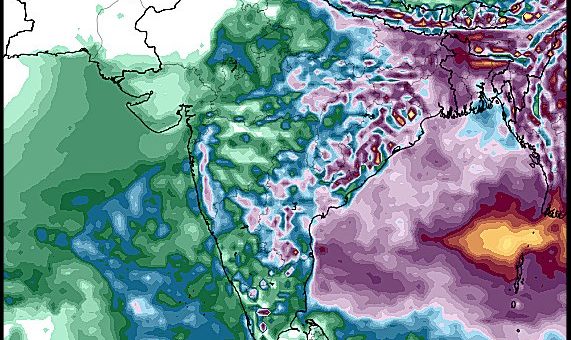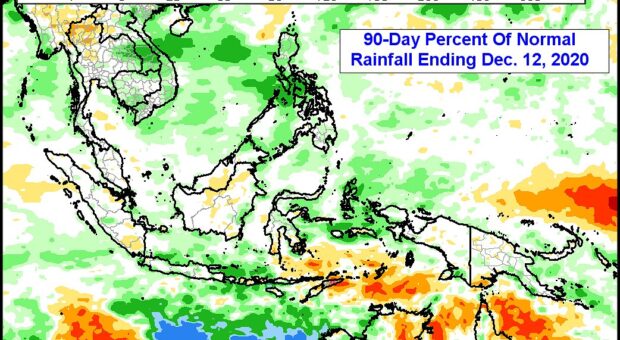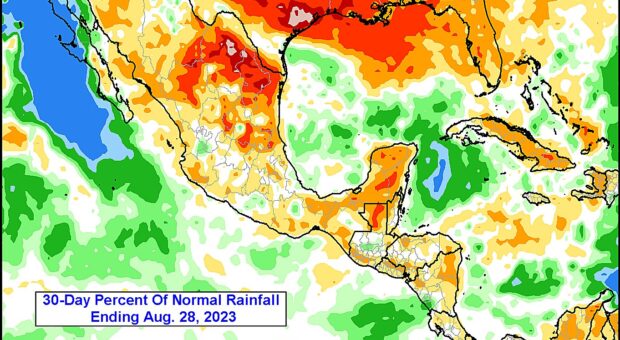Weakening El Nino To Bring On Better California Storm Potential
By Drew Lerner
November 23, 2015
Many Californians are growing impatient over the long advertised rainy weather that El Nino is supposed to bring. But changes are just a few weeks away and there is still growing concern that when it starts raining it may not stop for a while. Many of the stronger El Nino events in the past have produced copious amounts of rain. In actuality, it is not just El Nino that contributes to the rain, but a large part of it is from Madden Julian Oscillation (MJO).
MJO events are merely large regions in the atmosphere where conditions favor a greater than usual amount of rising motion from the surface high up into the atmosphere. Rising motion is a necessary ingredient for precipitation because quite often the only way it rains or snows is when warm, moist, air collides with cooler air. The cool conditions will condense the moisture in the warmer air and induce raindrop building and when the droplets get large enough they will fall to earth. This is not much different than a glass of ice water sitting on a table outside in the warm air. The cold glass condenses moisture from the air on the outer surface and in time tiny drops of water form on the glass. After a while in this exposure the drops of water begin merging and when they become heavy enough they slide down the glass to the table it is sitting on. That is the same phenomenon that occurs when clouds gather and rain evolves.
However, sometimes it is necessary to transport warm air aloft into the atmosphere to create condensation and in order to lift the air higher it needs to become less dense. Lower density air is created when it is warmed – much like the air inside a hot air balloon. As the air inside the balloon is heated it becomes less dense and rises while more dense air moves into the balloon to fill the gap of the lower density air. The balloon continues to rise until the air inside and outside the balloon reach and equilibrium.
If that atmosphere has a general region of higher pressure aloft that restricts rising air from successfully transporting warm, moist, air upward it will not rain nearly as much as it would if there was no cap on the rising column of air. The lack of high pressure aloft or “a cap”, as we meteorologists call it, will allow rising parcels of warm, moist, air to reach much higher heights and usually more aggressively. This quite often results in a greater amount of condensation, heavier cloud development and eventually stronger thunderstorms. So, when their is no cap on the atmosphere warm, moist, air is allowed to rise to higher altitudes and rain falls heavily.
MJO events induce better conditions for rising air. The cap is often removed in the atmosphere or it is shifting to higher altitudes and therefore greater rainfall and stronger thunderstorms evolve during the positive phase of MJO. The “O” in MJO stands for “oscillation” because the positive phase of MJO that induces greater rainfall is usually followed by a negative phase that that puts a strong cap on the atmosphere preventing thunderstorms from developing or keeping them very weak and poor rainfall producers.
MJO events typically develop over Africa and move through the Indian Ocean to Southeast Asia and eventually into the Pacific Ocean, always over the topical areas. During the winter season these MJO events can hold together for longer periods of time and they can drift all the way to the west coast of North America at times bringing significant rain to California, Mexico and the U.S. Pacific Northwest.
Strong El Nino events and Rapidly evolving El Nino events tend to suppress MJO events from evolving, which is one of the primary reasons why El Nino events product droughts in the tropics because conditions become less favorable for rising air. The El Nino events tend to produce more high pressure aloft and that creates a more prevailing environment for the negative phase of MJO.
Now that the 2015 El Nino has reached its peak in development it will soon begin a weakening trend. MJO events have been rare and as soon as the El Nino begins a more significant bout of weakening MJO events will start occurring more routinely bringing abundant rain events through the tropics of Africa, southern India, Indonesia, Malaysia, southeastern China, Philippines and northern Australia. Occasionally the MJO events should stream across the Pacific to bring moisture into California.
El Nino events also tend to warm the ocean greatly and sea surface temperatures are well above average in much of the northeastern and east-central Pacific Ocean providing more warm air to lift upward, but also more moisture to lift, as well. The warmer then ocean temperatures become in the eastern Pacific the more intense MJO events can become and during the middle of winter when air masses move across the Pacific Ocean from the higher latitudes there becomes a number of very large storms that feed upon MJO events. The warm, moist, ocean air is driven high into the atmosphere by MJO and the cold winds of winter catch the rising air and quickly condenses it while forming tremendous sized storms and the result in many big rian and snow producing storms that slam into California and the west coast of the United States.
El Nino, MJO and warmer than usual northeastern Pacific Ocean water usually work together during the heart of winter to produce flooding rainfall and California is often the biggest recipient of the rain, although northern Mexico and the U.S. Pacific Northwest can also be impacted.
The weakening trend in El Nino that will become more significant in December and January is sure to set off many more large storms in the western United States and instead of wanting more rain some Californians may start crying for drier weather by the time late winter arrives.










November 23, 2015
No Comments